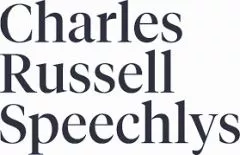New legislation could impose more VAT on charities that sell, assign or let buildings.
Overview
A charity using a building completed on or after 1st March 2011 for a relevant charitablepurpose ("RCP") that previously received a zero-rated supply of an interest in the buildingmay be required to charge itself a substantial amount of VAT if it sells, assigns or lets thebuilding. This is due to the Value Added Tax (Buildings and Land) Order 2011 (SI 2011 /86), which amends Schedule 10 Value Added Tax Act 1994 ("VATA").
Other changes made by the new legislation less relevant to charities are not consideredhere. For background, see the "Property VAT traps" article in the December 2010 issue.
When does a VAT charge arise?
Under both current and new legislation, VAT arises if (1) a charity occupies a building (orpart of a building) intended solely for use for a RCP, (2) the charity has previouslyreceived a zero-rated supply comprising an interest in the building (or relevant part)under Group 5 Schedule 8 VATA and (3) within ten years after completion of the building,the building (or relevant part) ceases to be used for a RCP or a relevant residential purpose ("RRP").
How much is the VAT charge?
The key change under the new legislation concerns the amount of the VAT charge.Currently, the amount of the VAT charge depends on how the change of use arises. Ifthe change in use results from the charity making a grant (eg sale, assignment or newlease), then the charity must charge VAT to the purchaser / tenant on the considerationprovided ("First Method"). However, if the charity's own use of the building changes,then it must charge itself a percentage of the VAT saving it obtained previously from thezero-rated supply: the percentage depends upon the extent of the change of use and thetime elapsed since completion of the building ("Second Method").
The new legislation abolishes the First Method for buildings completed on or after 1stMarch 2011: instead, the Second Method, ie self-supply, will be used in all cases.
Practical implications
Where a change in use of a building (or part of a building) is contemplated, the charityshould consider the self-supply VAT liability which might be triggered.
Where the change of use is due to a grant, the self-supply is in addition to (and may bemuch larger than) the actual supply made by the charity to the purchaser / tenant. If theactual supply would otherwise be exempt, the charity should consider opting to tax (whichmay reduce the cost to the charity resulting from the self-supply).
If the charity grants a lease to a tenant who intends use for a RCP / RRP, then no VATmay arise immediately. However, the charity should monitor the tenant's ongoing usebecause a subsequent change in use by the tenant could trigger a self-supply for thecharity.
The content of this article is intended to provide a general guide to the subject matter. Specialist advice should be sought about your specific circumstances.


